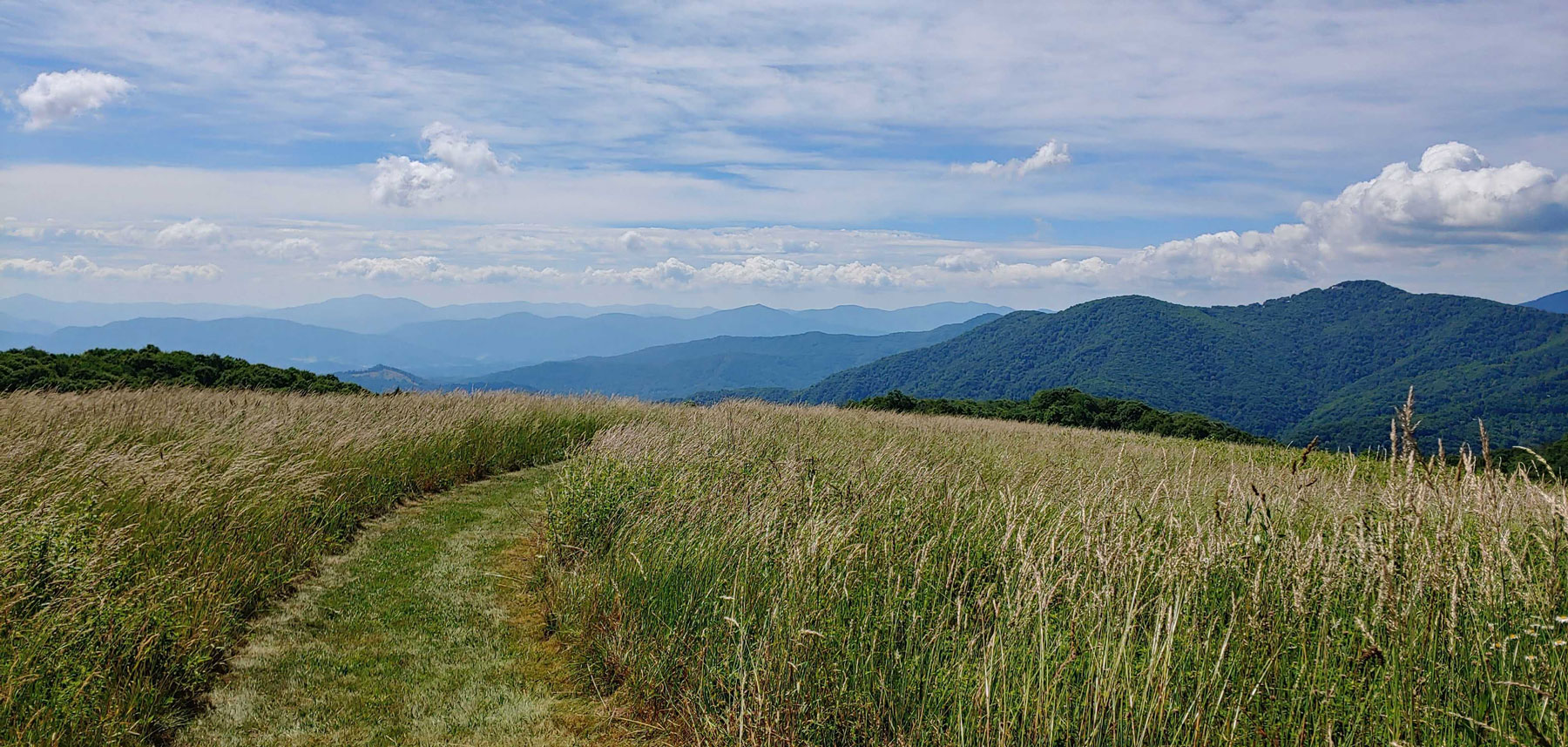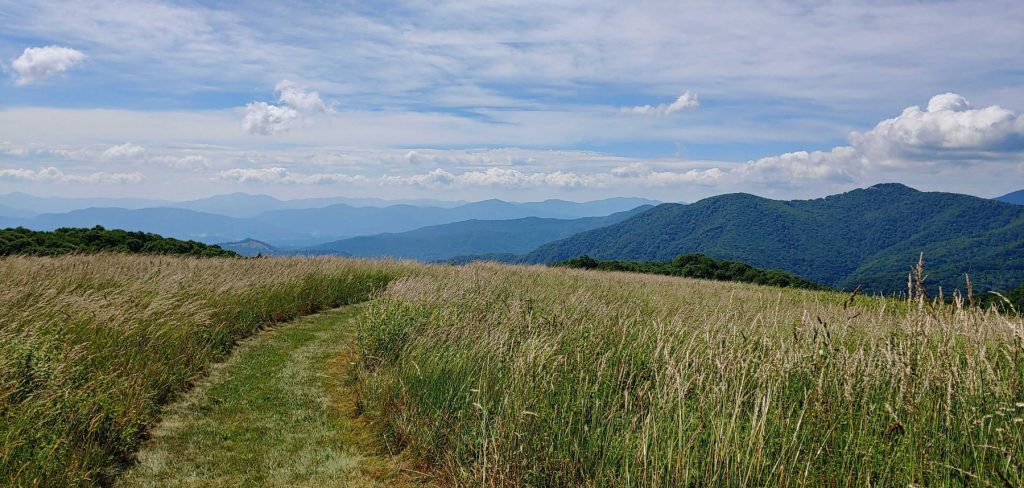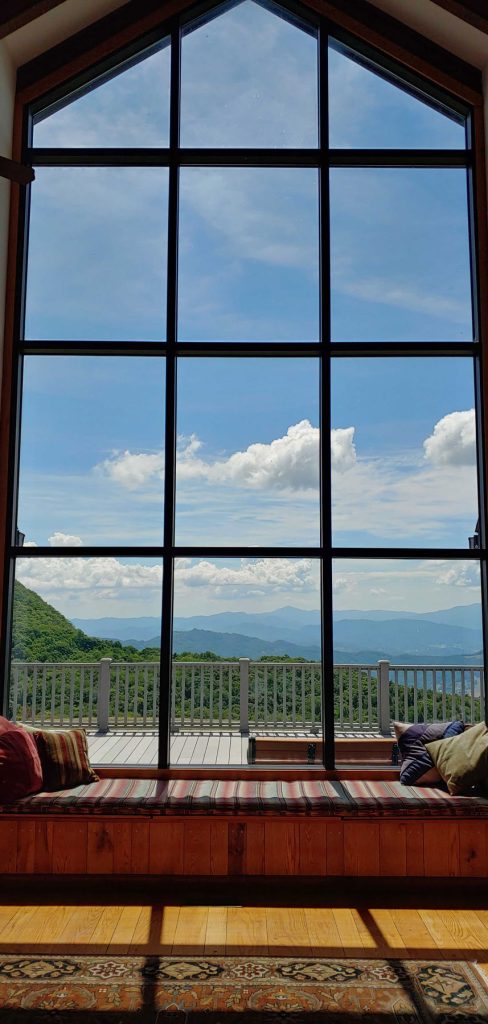
Sometimes I’m amazed by how little I know about so much. Luckily for me, however, I’m endlessly curious and open to the possibilities.

In my brief time as GSMA’s Steve Kemp Writer-in-Residence, the doors have swung wide open to expand my knowledge and help me understand the national park in previously unexpected ways.
Nothing could have been more unexpected than my experience at the park’s Appalachian Highlands Science Learning Center (AHSLC) at the Purchase in Waynesville, North Carolina. I’d never heard of the center until Frances Figart — GSMA’s Creative Services Director and my writing residency liaison — reached out thinking it would interest me.
Those who know me best know I seldom turn down a new adventure. Having driven to neighboring Cataloochee Valley in the fall to see the elks bugling, I knew, at the very least, I’d be privy to some noteworthy views.
But ‘noteworthy’ doesn’t begin to do the experience justice. My eyes about popped out of my head as I reached the grounds and was suddenly enveloped in an intensely expansive mountainscape. All I could think as I stared into that vast blue-grey horizon was wow, wow, wow!
After I parked, I stood for a few moments transfixed by the panoramic view. Not wanting to be late, I tried to collect my thoughts and walk toward the center where Paul Super introduced himself. Super is the science coordinator here as well as an affiliate biology professor at nearby Western Carolina University.

Although the summer temperature was rising fast, we chose to chat on the front porch, giving me more time to soak up the powerful view. Although I was desperately curious about the facility itself, I wanted to know more about Super first.
Super, it seems, was destined for a science-based career. “In first grade,” he said, “I wanted to be a paleontologist. By the time I was in sixth grade, I had become fascinated by birds. My teacher tapped me to help with birding field trips.” Super’s curiosity grew only stronger, ultimately leading him to a master’s degree in parasite ecology.
“As I was looking for career options, I found that the national park service was ahead of the curve not only in doing science but in educating people about it,” Super remembers. He gained permanent ranger status while working at Acadia National Park and has been at the AHSLC at The Purchase for the last 20 years.
Super’s work and travels have clearly influenced his children’s lives as well. He’s proud to note his home sports a wall of junior ranger badges earned by his children as they grew up traveling to different parks.
The learning center boasts its own rich history. Once a memory-filled summer home, it was donated to Great Smoky Mountains National Park by owners Kathryn McNeil and Voit Gilmore, along with 535 acres. In 2001, the site — referred to as The Purchase given its unimpeded view of Purchase Knob — became one of five Congress-designated learning centers whose purpose was supporting park research that could then be shared with the public.
I was, as a friend of mine would say, ‘gobsmacked’ as I suddenly felt the significance of the work being done here.
According to Super, the Smokies is one of the top research parks in the nation. “If you don’t have research, you don’t know what you’ve got, which makes it difficult to protect,” he said.
The bulk of his days are spent issuing permits, linking researchers up with each other, trying to find funds for new projects, and updating research-needs questions. The studies themselves sound fascinating. One addresses tree physiology and how climate change will impact the evergreens. Another looks at the recovery patterns of salamanders following the 2016 Chimney Tops 2 Fire. Still another is studying the impact on salamanders from chemicals used to protect the hemlocks from the devastating woolly adelgid. In addition to a host of other projects, there’s the All Taxa Biodiversity Inventory, an ongoing effort coordinated by park partner Discover Life in America to determine exactly what lives in the park. “There are currently more than 1,000 species in the park that are undescribed by science,” Super notes.
Of course, where there’s research, there are also new discoveries, something that excites Super to no end: “There was a lichen found here that has been named after me — Pertusaria superiana, commonly referred to as Paul’s super lichen.”
Thanks to the compound’s reconfiguration, researchers not only have comfortable lodging with a million-dollar view but a small wet lab for on-site experiments. The Purchase team also hosts a variety of school and community outreach programs, which includes high school internships. While I am admittedly envious for those interns’ rich experiences, I am mostly hopeful they will soak up as much knowledge as they can and use the opportunity to open doors to their own possibilities.
As for me, I’m wondering how soon I can return. It’s not just that there’s so much more to discover, it’s that there’s so much more I want to discover. I’m fairly certain the possibilities are endless.
Sue Wasserman is the author of A Moment’s Notice and Walk with Me: Exploring Nature’s Wisdom. She has also written for the New York Times and Southern Living. She currently lives in North Carolina.
Subscribe to get the latest posts sent to your email.
The Great Smokies Welcome Center is located on U.S. 321 in Townsend, TN, 2 miles from the west entrance to Great Smoky Mountains National Park. Visitors can get information about things to see and do in and around the national park and shop from a wide selection of books, gifts, and other Smokies merchandise. Daily, weekly, and annual parking tags for the national park are also available.